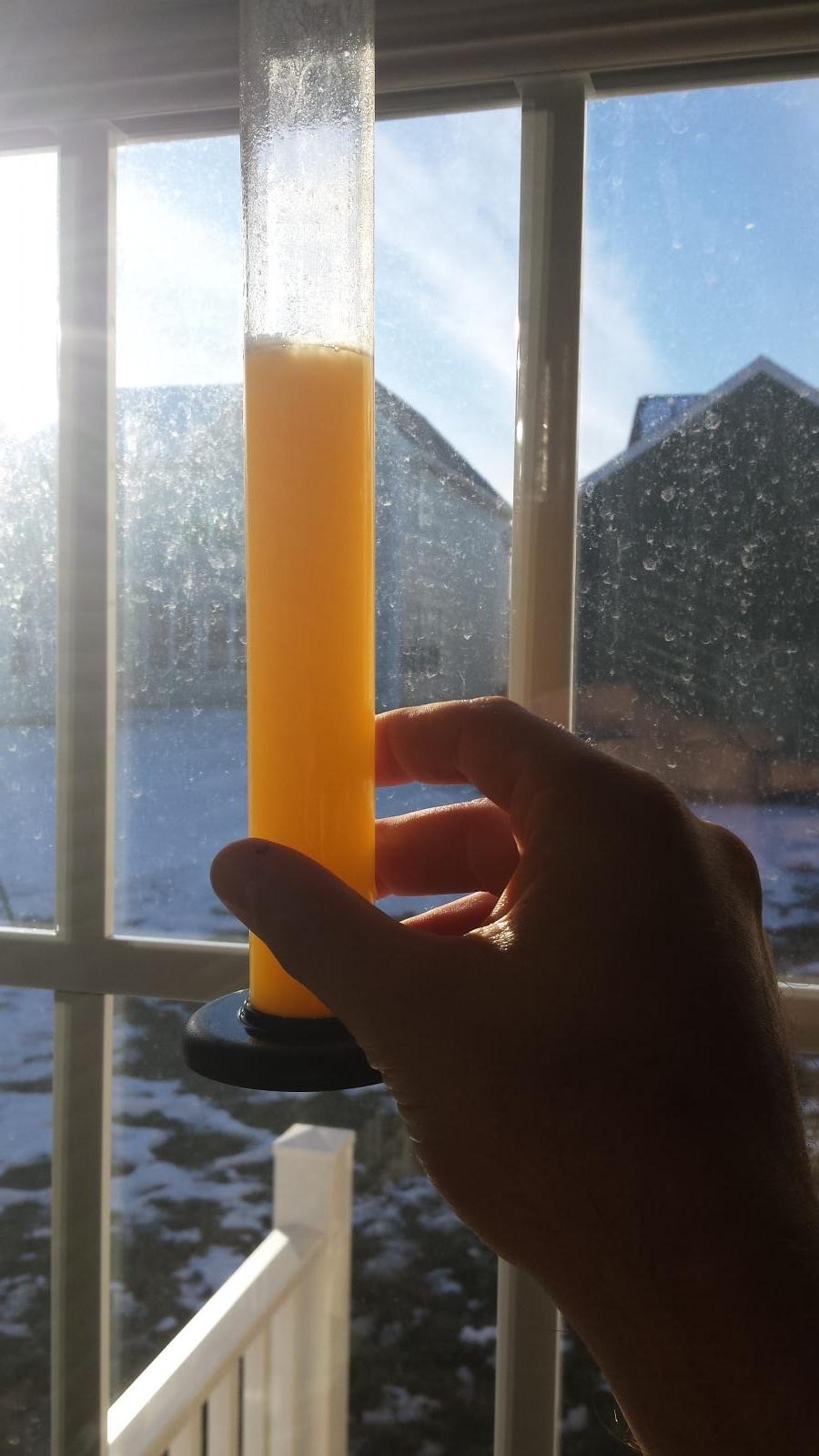Forgive the thread highjacking, but if you can help me figure this out, I'd appreciate. And if you won't, just say so and I'll stop highjacking.
I am trying to clone KneeDeep's Breaking Bud APA:
https://www.homebrewtalk.com/showthread.php?t=568585
I followed your RO water suggestions from this thread, and I used a full package of San Diego Super liquid yeast after oxygenating a little over two gallons of wort.
To your specific questions:
1. I started with my fermentation chamber at 61F on a Sunday night and had good activity the next morning. I increased to 65F after about three days and to 68F another four days later.
2. I checked for FG at about day 10. I got 1.018 instead of the projected 1.011. I went ahead and cold crashed because I wanted these 2015 crop hops to taste as fresh as possible.
3. All grain all the time. I've never made an extract.
4. San Diego Super in the new "Pure Pitch" packaging. Date on the package indicated it was about two weeks old.
5. No starter. Target OG was 1.063, but I actually hit 1.059. And, as noted above, I pitched a full package of SDS into a bit over two gallons of wort. I got quite vigorous activity and the krausen started dropping around day 3.
Any thoughts?
I am trying to clone KneeDeep's Breaking Bud APA:
https://www.homebrewtalk.com/showthread.php?t=568585
I followed your RO water suggestions from this thread, and I used a full package of San Diego Super liquid yeast after oxygenating a little over two gallons of wort.
To your specific questions:
1. I started with my fermentation chamber at 61F on a Sunday night and had good activity the next morning. I increased to 65F after about three days and to 68F another four days later.
2. I checked for FG at about day 10. I got 1.018 instead of the projected 1.011. I went ahead and cold crashed because I wanted these 2015 crop hops to taste as fresh as possible.
3. All grain all the time. I've never made an extract.
4. San Diego Super in the new "Pure Pitch" packaging. Date on the package indicated it was about two weeks old.
5. No starter. Target OG was 1.063, but I actually hit 1.059. And, as noted above, I pitched a full package of SDS into a bit over two gallons of wort. I got quite vigorous activity and the krausen started dropping around day 3.
Any thoughts?



















![Craft A Brew - Safale BE-256 Yeast - Fermentis - Belgian Ale Dry Yeast - For Belgian & Strong Ales - Ingredients for Home Brewing - Beer Making Supplies - [3 Pack]](https://m.media-amazon.com/images/I/51bcKEwQmWL._SL500_.jpg)





























